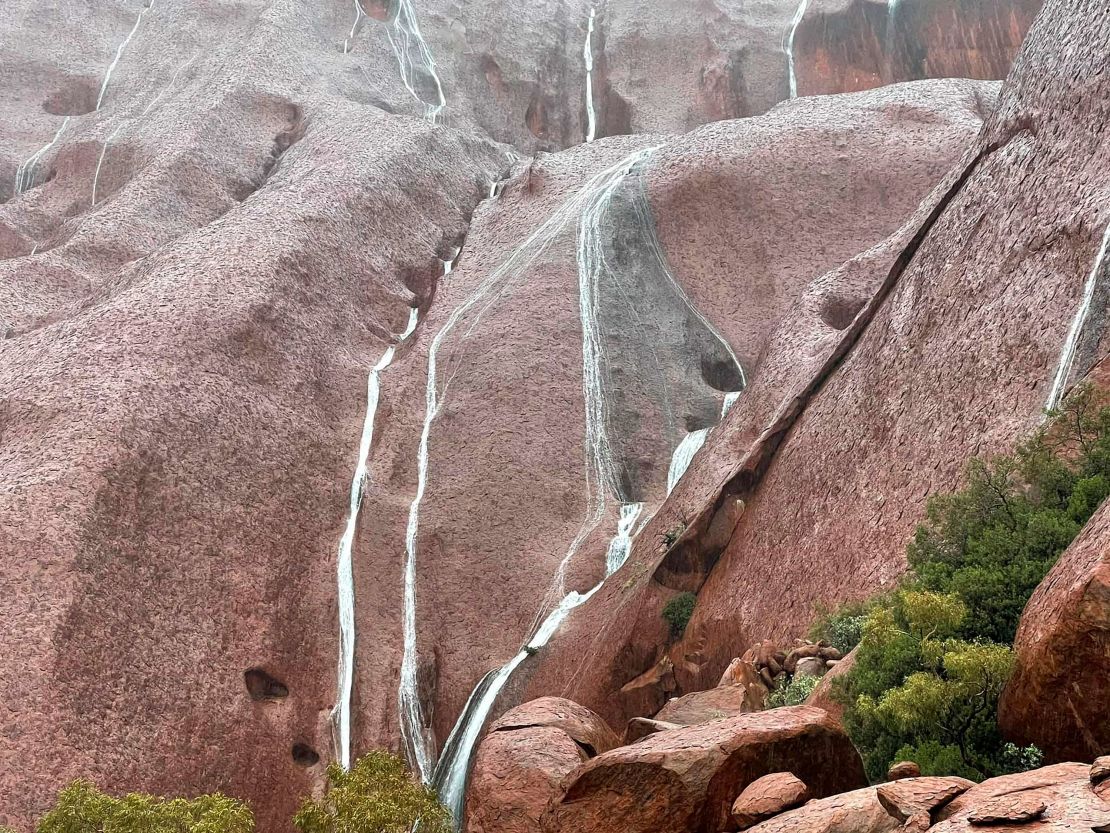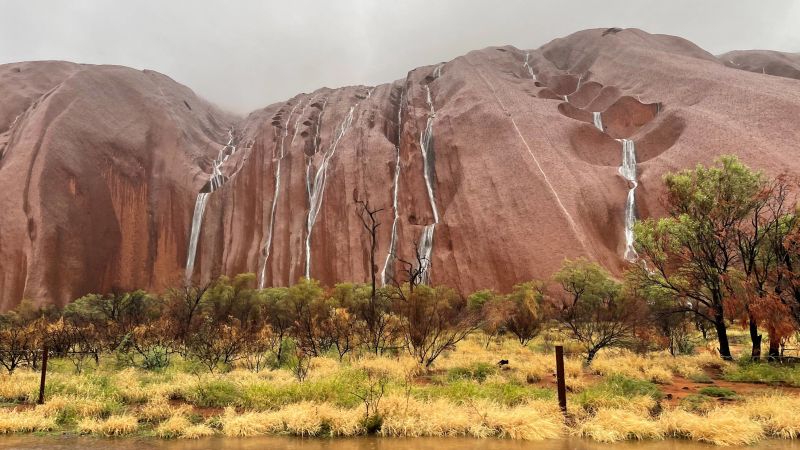After heavy rains battered northern Australia for almost a week, stunning footage has emerged of waterfalls at Uluru, the sacred sandstone monolith in the desert plains of the Northern Territory’s “Red Centre.”
Videos and photos show gallons of water cascading from the bright red rock, as rain totaling up to five times the March monthly average fell in just four days in the worst-affected areas.
The usually dry site was pelted during the downpour, resulting in the picturesque chutes running down the divots carved into the stone.
“I have lived and worked at Uluru for 4 years and never seen waterfalls and rain like this,” Stacey MacGregor, who works for a local tour company, told CNN.
“I was in the park at 11am and went back at 5pm when the rain got heavier to get these shots,” she added, referring to pictures posted on her Facebook page.
The area receives around 13 inches of rainfall on average each year, but recorded nearly 2 inches on Sunday and Monday alone, according to the Australian Bureau of Meteorology. Temperatures in March can reach higher than 104 degrees Fahrenheit.
The Australian government declared a natural disaster in large swaths of New South Wales (NSW) over the weekend as heavy rains battered the state and forced thousands to evacuate.

A lucky few were able to see the waterfalls at Uluru, but tourists have been prohibited from traversing the sacred site since late 2019, after the Anangu Aboriginal people said it was being trashed by visitors eroding its surface, dropping rubbish and polluting nearby waterholes.
Before the ban came into effect, tens of thousands of tourists climbed the monolith.
A UNESCO World Heritage site, Uluru sits 280 miles west of Alice Springs. Standing 1,142 feet high, it is taller than the Eiffel Tower and London’s Shard skyscraper. It is hot, slippery and often windy and at least 35 people have died since climbing started in the 1950s.
Read the full article here


